TRPV1 regulates ApoE4-disrupted intracellular lipid homeostasis and decreases synaptic phagocytosis by microglia
- PMID: 36720919
- PMCID: PMC9981624
- DOI: 10.1038/s12276-023-00935-z
TRPV1 regulates ApoE4-disrupted intracellular lipid homeostasis and decreases synaptic phagocytosis by microglia
Abstract
Although the ε4 allele of the apolipoprotein E (ApoE4) gene has been established as a genetic risk factor for many neurodegenerative diseases, including Alzheimer's disease, the mechanism of action remains poorly understood. Transient receptor potential vanilloid 1 (TRPV1) was reported to regulate autophagy to protect against foam cell formation in atherosclerosis. Here, we show that ApoE4 leads to lipid metabolism dysregulation in microglia, resulting in enhanced MHC-II-dependent antigen presentation and T-cell activation. Lipid accumulation and inflammatory reactions were accelerated in microglia isolated from TRPV1flox/flox; Cx3cr1cre-ApoE4 mice. We showed that metabolic boosting by treatment with the TRPV1 agonist capsaicin rescued lipid metabolic impairments in ApoE4 neurons and defects in autophagy caused by disruption of the AKT-mTOR pathway. TRPV1 activation with capsaicin reversed ApoE4-induced microglial immune dysfunction and neuronal autophagy impairment. Capsaicin rescued memory impairment, tau pathology, and neuronal autophagy in ApoE4 mice. Activation of TRPV1 decreased microglial phagocytosis of synapses in ApoE4 mice. TRPV1 gene deficiency exacerbated recognition memory impairment and tau pathology in ApoE4 mice. Our study suggests that TRPV1 regulation of lipid metabolism could be a therapeutic approach to alleviate the consequences of the ApoE4 allele.
© 2023. The Author(s).
Conflict of interest statement
The authors declare no competing interests.
Figures


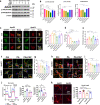
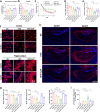
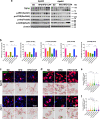
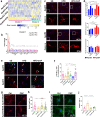
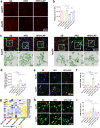
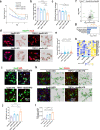

Similar articles
-
A breakdown in microglial metabolic reprogramming causes internalization dysfunction of α-synuclein in a mouse model of Parkinson's disease.J Neuroinflammation. 2022 May 22;19(1):113. doi: 10.1186/s12974-022-02484-0. J Neuroinflammation. 2022. PMID: 35599331 Free PMC article.
-
TRPV1 alleviates APOE4-dependent microglial antigen presentation and T cell infiltration in Alzheimer's disease.Transl Neurodegener. 2024 Oct 29;13(1):52. doi: 10.1186/s40035-024-00445-6. Transl Neurodegener. 2024. PMID: 39468688 Free PMC article.
-
The TRPV1-PKM2-SREBP1 axis maintains microglial lipid homeostasis in Alzheimer's disease.Cell Death Dis. 2025 Jan 14;16(1):14. doi: 10.1038/s41419-024-07328-8. Cell Death Dis. 2025. PMID: 39809738 Free PMC article.
-
TRPV1 sustains microglial metabolic reprogramming in Alzheimer's disease.EMBO Rep. 2021 Jun 4;22(6):e52013. doi: 10.15252/embr.202052013. Epub 2021 May 17. EMBO Rep. 2021. PMID: 33998138 Free PMC article.
-
Association between abnormal lipid metabolism and Alzheimer's disease: New research has revealed significant findings on the APOE4 genotype in microglia.Biosci Trends. 2024 Jun 6;18(2):195-197. doi: 10.5582/bst.2024.01092. Epub 2024 Apr 17. Biosci Trends. 2024. PMID: 38631884 Review.
Cited by
-
The APOE-Microglia Axis in Alzheimer's Disease: Functional Divergence and Therapeutic Perspectives-A Narrative Review.Brain Sci. 2025 Jun 23;15(7):675. doi: 10.3390/brainsci15070675. Brain Sci. 2025. PMID: 40722268 Free PMC article. Review.
-
Effects of Leaf Extracts from Genetic Resource of Capsicum spp. on Neuroprotection and Anti-Neuroinflammation in HT22 and in BV2 Cells.Plants (Basel). 2024 Oct 8;13(19):2820. doi: 10.3390/plants13192820. Plants (Basel). 2024. PMID: 39409690 Free PMC article.
-
A small-molecule TLR4 antagonist reduced neuroinflammation in female E4FAD mice.Alzheimers Res Ther. 2023 Oct 19;15(1):181. doi: 10.1186/s13195-023-01330-6. Alzheimers Res Ther. 2023. PMID: 37858252 Free PMC article.
-
Unraveling the enigma: housekeeping gene Ugt1a7c as a universal biomarker for microglia.Front Psychiatry. 2024 Apr 11;15:1364201. doi: 10.3389/fpsyt.2024.1364201. eCollection 2024. Front Psychiatry. 2024. PMID: 38666091 Free PMC article.
-
A medicine and food homology formula prevents cognitive deficits by inhibiting neuroinflammation and oxidative stress via activating AEA-Trpv1-Nrf2 pathway.Inflammopharmacology. 2024 Dec;32(6):3745-3759. doi: 10.1007/s10787-024-01570-4. Epub 2024 Sep 21. Inflammopharmacology. 2024. PMID: 39305407
References
Publication types
MeSH terms
Substances
LinkOut - more resources
Full Text Sources
Research Materials
Miscellaneous

